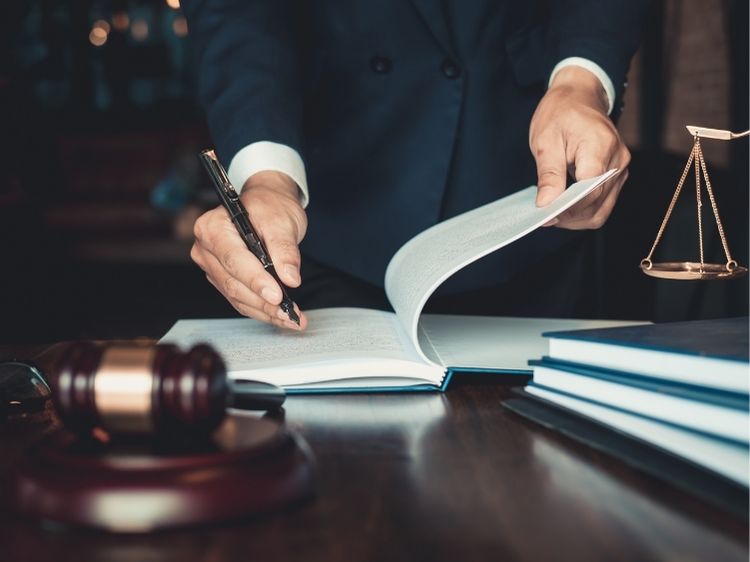Strict Liability vs Negligence: Understanding the Key Differences
When it comes to legal terms, few concepts are as crucial to comprehend as strict liability and negligence. These terms often pop up in discussions about personal injury cases, product defects, and various other legal disputes. But what do they really mean, and how do they differ? In this article, we’ll dive deep into these concepts, explore their applications, and highlight the key distinctions between strict liability and negligence.
The Importance of Legal Accountability
Imagine you’re driving down the road, minding your own business, when suddenly, a car rear-ends you. Was it because the driver was distracted, or was there a defect in the car’s braking system? Determining who’s at fault and why is where the concepts of strict liability and negligence come into play. These legal principles are essential in holding parties accountable for their actions—or sometimes, their inactions.
Whether you’re dealing with a personal injury claim, a defective product, or even a case of environmental harm, understanding the difference between strict liability and negligence can be crucial. Let’s break down these terms and see how they affect legal outcomes.
What is Strict Liability?
Strict liability is a legal doctrine that holds a party responsible for their actions or products, regardless of fault or intent. In simpler terms, if you’re found liable under strict liability, it doesn’t matter whether you were negligent or if you took all possible precautions—you’re still responsible.
Key Characteristics of Strict Liability
- No Need to Prove Fault: Unlike negligence, strict liability doesn’t require the injured party to prove that the defendant was careless or reckless. All that needs to be shown is that the defendant’s actions or product caused the harm.
- Common in Product Liability Cases: Strict liability is often applied in cases involving defective products. Manufacturers, distributors, and retailers can all be held liable if a product is found to be unsafe, even if they weren’t negligent in the production process.
- Applies to Certain Activities: Some activities are considered inherently dangerous, and strict liability applies automatically. For example, if you’re using explosives or keeping wild animals, you may be held strictly liable for any harm that results, regardless of precautions taken.
What is Negligence?
Negligence, on the other hand, is all about fault. It occurs when someone fails to exercise the level of care that a reasonable person would in the same situation, leading to harm or damage. To win a negligence case, the injured party must prove that the defendant’s lack of care directly caused their injury.
Elements of Negligence
- Duty of Care: The defendant must have owed a duty of care to the injured party. This means they were required to act in a way that would prevent harm.
- Breach of Duty: The defendant breached that duty by failing to act as a reasonable person would have.
- Causation: The breach of duty must be the direct cause of the injury. This involves both actual cause (the injury wouldn’t have occurred but for the defendant’s actions) and proximate cause (the injury was a foreseeable result of the defendant’s actions).
- Damages: The injured party must have suffered actual harm or damage as a result of the defendant’s breach of duty.
Strict Liability vs Negligence: The Key Differences
Now that we’ve outlined the basics of strict liability and negligence, let’s take a closer look at the primary differences between these two legal concepts.
1. Fault Requirement
The most significant difference between strict liability and negligence is the requirement of fault. In negligence cases, the plaintiff must prove that the defendant was at fault by failing to act with reasonable care. In strict liability cases, however, fault is irrelevant. The defendant can be held liable even if they exercised all possible precautions.
2. Applicability
Strict liability typically applies to specific situations, such as defective products, abnormally dangerous activities, or harm caused by animals. Negligence, on the other hand, can apply to a wide range of situations, from car accidents to medical malpractice.
3. Proof Burden
In a negligence case, the burden of proof is on the plaintiff to show that the defendant’s actions fell below the standard of care and caused the injury. With strict liability, the plaintiff only needs to prove that the defendant’s actions or product caused the harm—there’s no need to prove that the defendant was negligent.
4. Defense Options
In negligence cases, defendants can use several defenses, such as contributory negligence (arguing that the plaintiff was also at fault) or assumption of risk (arguing that the plaintiff knew the risks and proceeded anyway). In strict liability cases, defenses are much more limited. The most common defense is to argue that the harm wasn’t caused by the defendant’s product or actions.
Examples of Strict Liability and Negligence in Real-Life Cases
To better understand how strict liability and negligence play out in real life, let’s look at a couple of examples.
Example of Strict Liability: Product Defects
Suppose a manufacturer produces a batch of defective airbags that explode upon deployment, causing injuries to drivers and passengers. Even if the manufacturer followed all safety protocols during production, they can still be held strictly liable for the injuries caused by the defective airbags. The injured parties don’t need to prove that the manufacturer was negligent—only that the defective airbags caused their injuries.
Example of Negligence: Car Accidents
In a typical car accident case, if a driver runs a red light and crashes into another vehicle, the injured party can sue for negligence. They would need to prove that the driver breached their duty of care by running the red light, that this breach caused the accident, and that they suffered damages as a result.
FAQs About Strict Liability and Negligence
Q1: Can both strict liability and negligence apply in the same case?
Yes, it’s possible for both to apply in certain cases. For example, in a product liability case, a plaintiff might argue that a product was both defectively designed (strict liability) and that the manufacturer was negligent in the production process.
Q2: Which is harder to prove: strict liability or negligence?
Negligence is generally harder to prove because it requires showing that the defendant was at fault. Strict liability, on the other hand, only requires proving that the defendant’s actions or product caused the harm.
Q3: Can a plaintiff win a strict liability case without proving damages?
No, in both strict liability and negligence cases, the plaintiff must prove that they suffered actual damages as a result of the defendant’s actions.
Q4: Are there any defenses to strict liability?
While defenses are limited in strict liability cases, one possible defense is to argue that the harm was caused by something other than the defendant’s product or actions.
Conclusion: Understanding Your Rights and Responsibilities
Whether you’re a business owner, a driver, or just an average person, understanding the difference between strict liability and negligence is crucial. These legal principles help determine who’s responsible when things go wrong, ensuring that those who suffer harm can seek the compensation they deserve.
In strict liability cases, the focus is on the harm caused, not the defendant’s intent or actions. Negligence, on the other hand, requires proving that the defendant failed to act with reasonable care. Both concepts are vital in the legal landscape, and knowing the difference can make all the difference in a legal dispute.
Authoritative Links
- Product Liability Information: https://www.consumer.ftc.gov/articles/product-liability-claims
- Negligence Law Overview: https://www.law.cornell.edu/wex/negligence
- Strict Liability Explanation: https://www.law.cornell.edu/wex/strict_liability



